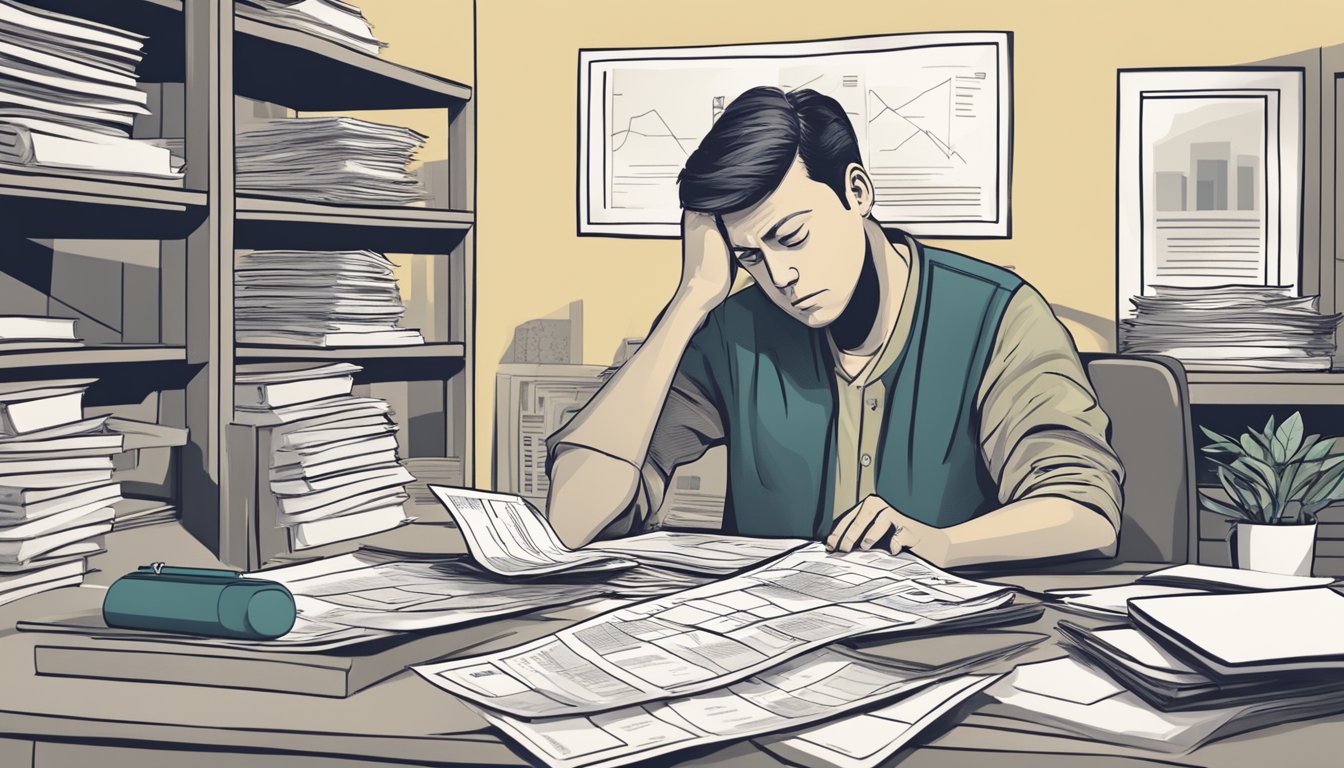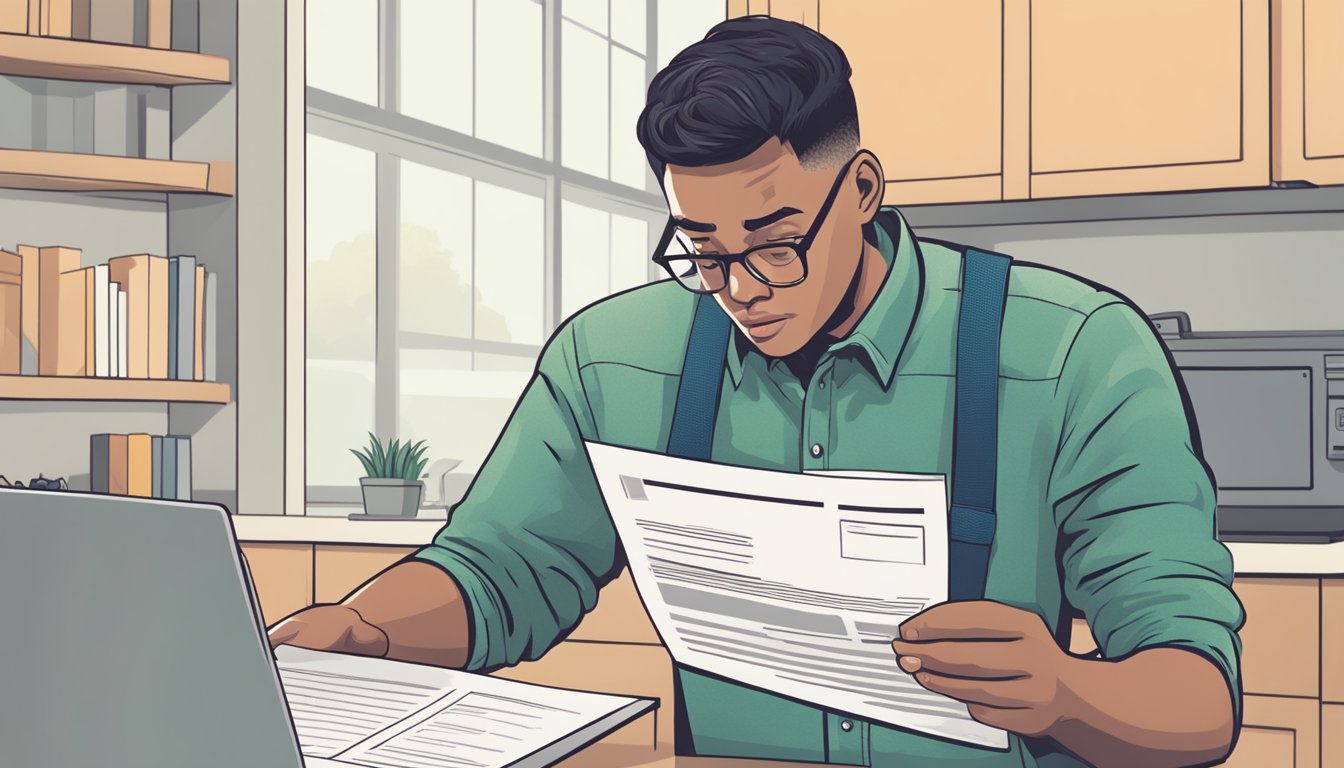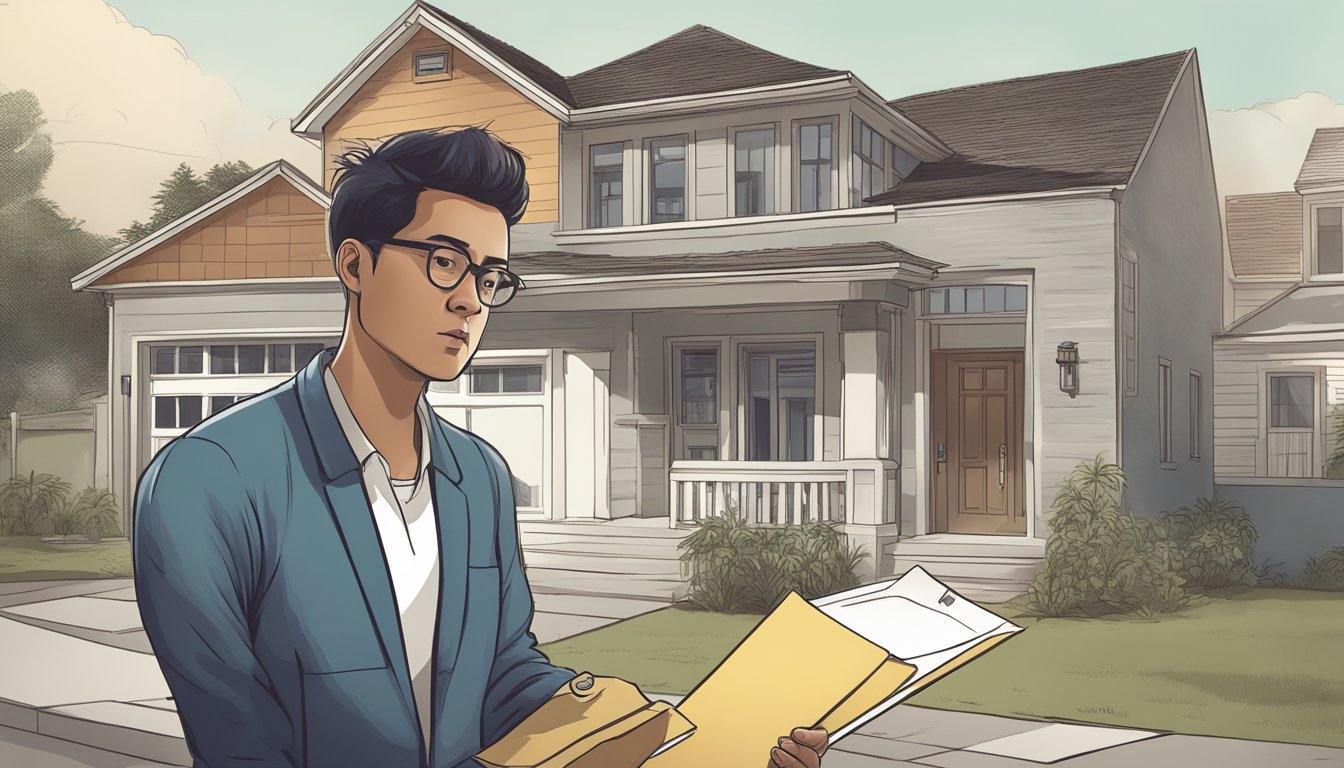Introduction

Buying a home in Singapore is a significant investment, and it is not uncommon for Singaporeans to use their Central Provident Fund (CPF) savings to finance their housing loans. However, what happens when your CPF savings are not enough to pay off your housing loan? This is a common concern for many Singaporeans, and in this article, we will explore the strategies you can use to maximise your CPF usage for housing and navigate financial shortfalls in housing loans.
Understanding CPF and Housing Loans in Singapore
Before we dive into the strategies, it is essential to understand how CPF savings can be used to finance your housing loan. Your CPF savings can be used to pay for the downpayment, monthly instalments, and even stamp duties and legal fees. However, there are limits to how much CPF savings you can use, and this is determined by factors such as the type of property you are buying and your age.
Strategies to Maximise CPF Usage for Housing
If you find that your CPF savings are not enough to pay off your housing loan, there are several strategies you can use to maximise your CPF usage for housing. These include topping up your CPF account, refinancing your housing loan, and downsizing your home. By implementing these strategies, you can ensure that you have enough CPF savings to pay off your housing loan and plan for your retirement.
Key Takeaways
- Understanding how CPF savings can be used to finance your housing loan is crucial.
- Maximising your CPF usage for housing can be achieved through topping up your CPF account, refinancing your housing loan, and downsizing your home.
- Planning for your retirement while paying off your housing loan is essential.
Understanding CPF and Housing Loans in Singapore

If you are planning to purchase a property in Singapore, it is important to understand the basics of CPF and housing loans. This will help you make informed decisions and avoid any potential pitfalls.
Basics of CPF and CPF Ordinary Account
CPF, or Central Provident Fund, is a mandatory social security savings scheme in Singapore. It is designed to help Singaporeans save for their retirement, healthcare, and housing needs. As a Singaporean, you are required to contribute a portion of your monthly income to your CPF account.
The CPF Ordinary Account is one of three accounts under your CPF monies. It is meant for housing, education, and investment purposes. You can use the funds in your CPF Ordinary Account to pay for your housing loan.
Key Features of HDB and Bank Housing Loans
There are two types of housing loans in Singapore – HDB loans and bank loans. HDB loans are offered by the Housing Development Board, while bank loans are offered by commercial banks.
The loan-to-value (LTV) limit is the maximum amount of loan you can get based on the value of your property. For HDB loans, the LTV limit is 90%, while for bank loans, it is 75%. However, the LTV limit for bank loans may vary depending on the bank’s policies.
The interest rate for HDB loans is fixed, while for bank loans, it can be fixed or variable. The interest rate for your housing loan will depend on various factors such as the type of loan, the loan amount, and the loan tenure.
It is important to note that there are CPF rules governing the use of your CPF monies for housing loans. You should check with your CPF agent or the CPF website to ensure that you have enough CPF savings to pay for your monthly housing loan deduction.
By understanding the basics of CPF and housing loans in Singapore, you can make informed decisions when purchasing a property. Whether you opt for an HDB loan or a bank loan, it is important to ensure that you have enough CPF savings in your CPF Ordinary Account to pay for your monthly housing loan deduction.
Strategies to Maximise CPF Usage for Housing

If you are facing a shortfall in your CPF savings to pay for your property, there are a few strategies you can use to optimise your CPF usage for housing.
Optimising CPF OA Savings for Property Purchase
Your CPF Ordinary Account (OA) savings can be used to pay for the downpayment and monthly mortgage payments for your property. To maximise your CPF OA savings for property purchase, you can consider the following:
-
Buy a property within your budget: It is important to buy a property that you can afford. This will ensure that you do not deplete your CPF OA savings completely and have enough savings for other purposes.
-
Use CPF OA savings for downpayment: You can use your CPF OA savings to pay for the downpayment of your property. The maximum amount you can use is 15% of the purchase price or the valuation of the property, whichever is lower.
-
Pay monthly mortgage payments with CPF OA savings: You can use your CPF OA savings to pay for your monthly mortgage payments. The maximum amount you can use is the monthly instalment amount or the CPF OA balance, whichever is lower.
Understanding CPF Top-Ups and Withdrawal Limits
To maximise your CPF usage for housing, you can also consider CPF top-ups and withdrawal limits. Here are some things you need to know:
-
CPF top-ups: You can make CPF top-ups to your own or your loved ones’ CPF accounts to increase your CPF savings. This can help you to have more savings for your housing needs.
-
CPF withdrawal limits: There are withdrawal limits for CPF savings used for housing. When you sell your property, you will need to return the amount taken from your CPF with the accrued interest. The proceeds of the sale will be dispersed in this order: outstanding housing loan, CPF principal amount withdrawn, and the remaining proceeds to you.
By optimising your CPF OA savings for property purchase and understanding CPF top-ups and withdrawal limits, you can maximise your CPF usage for housing and ensure that you have enough savings for other purposes. Remember to buy a property within your budget and use your CPF savings wisely.
Navigating Financial Shortfalls in Housing Loans

If you’re looking to purchase a property in Singapore, you may be wondering how to deal with the financial shortfalls that can arise when your CPF savings are not enough to cover the cost of your housing loan. Fortunately, there are several options available to help you navigate this situation.
Dealing with Insufficient CPF Savings
Firstly, if you find that your CPF savings are not enough to pay for your housing loan, you may want to consider paying the shortfall in cash. This can be done by making a deposit directly to your bank or HDB if you are taking a bank loan or HDB loan, respectively. Alternatively, you can choose to reduce the amount of your housing loan to match your CPF savings.
It’s important to note that only your Ordinary Account savings can be used for housing repayments. You should also check that you have enough CPF Ordinary Account savings and the maximum amount of CPF savings that you can use for your property. You can view your Home ownership dashboard to find out your latest usage and usage limit for your property.
Alternative Financing Options and Cash Payments
If you’re still struggling to cover the cost of your housing loan, there are several alternative financing options available to you. For example, you can consider taking out a personal loan or using your savings to pay for the deposit, processing fee, legal fees, or other expenses associated with purchasing a property.
Another option is to consider purchasing a more affordable property, such as a resale HDB flat or a smaller private property. This can help you to reduce your downpayment and overall cost of the property. You can also consider renting out a room or part of your property to generate additional income.
In conclusion, navigating financial shortfalls in housing loans can be challenging, but there are several options available to help you overcome this situation. By carefully considering your options and making informed decisions based on your financial situation, you can successfully purchase your dream property in Singapore.
Planning for Retirement While Paying Off Your Housing Loan

As a homeowner in Singapore, you understand the importance of using your CPF savings to pay off your housing loan. However, it’s important to balance your CPF withdrawals for both housing and retirement. In this section, we’ll discuss how you can plan for retirement while paying off your housing loan.
Balancing CPF Withdrawals for Housing and Retirement
When it comes to using your CPF savings to pay off your housing loan, it’s important to strike a balance between your housing needs and your retirement needs. While it’s tempting to use all of your CPF savings to pay off your housing loan, you should also consider setting aside some of your savings for retirement.
One way to balance your CPF withdrawals is to use your CPF Ordinary Account (OA) for your housing needs and your CPF Special Account (SA) for your retirement needs. The OA can be used for housing-related expenses such as your monthly mortgage payments, while the SA can be used to build your retirement savings.
CPF LIFE and Retirement Sum Schemes
As you plan for retirement, it’s important to understand CPF LIFE and the Retirement Sum Schemes. CPF LIFE is a national annuity scheme that provides you with a monthly payout for life once you reach the payout eligibility age. The payout amount is based on the amount of money you have in your Retirement Account (RA).
To be eligible for CPF LIFE, you need to have a sufficient retirement sum in your RA. The Basic Retirement Sum (BRS) is the minimum amount you need to have in your RA to be eligible for CPF LIFE. The BRS is currently $93,000 and is adjusted annually for inflation.
If you’re unable to meet the BRS, you can opt for the CPF LIFE Basic Plan, which provides a lower monthly payout but requires a lower retirement sum. Alternatively, you can choose to defer your CPF LIFE payouts until you’re able to meet the BRS.
By balancing your CPF withdrawals for housing and retirement, and understanding CPF LIFE and the Retirement Sum Schemes, you can plan for a comfortable retirement while paying off your housing loan.
Additional Considerations for Housing Loans

When it comes to using CPF to pay for your housing loan, there are additional considerations to keep in mind. These include the impact of the remaining lease on CPF usage, as well as the legal and tax implications of property transactions.
Impact of Remaining Lease on CPF Usage
The remaining lease of your property can affect the amount of CPF savings you can use to pay for your housing loan. For HDB flats, there is a Valuation Limit (VL) that determines the maximum amount of CPF savings you can use. The VL decreases as the remaining lease of the flat decreases. For example, if your HDB flat has a remaining lease of less than 60 years, you will not be able to use your CPF savings to pay for the entire property.
For private properties, the amount of CPF savings you can use to pay for your housing loan is determined by the property’s market value and the remaining lease. You can use up to 15% of the property’s market value if the remaining lease is less than 60 years, and up to 100% if the remaining lease is more than 30 years.
Legal and Tax Implications of Property Transactions
When buying or selling a property, there are legal and tax implications to consider. For example, if you are buying a resale HDB flat, you will need to pay a resale levy to the HDB. This levy is meant to offset the subsidy given to you when you bought your first HDB flat. The amount of the levy depends on the type of flat and when you bought your first HDB flat.
If you are buying a private property, you will need to pay stamp duty. The amount of stamp duty you need to pay depends on the purchase price of the property. You may also need to pay other fees, such as legal fees and agent fees.
When selling a property, you may be eligible for a CPF refund. The amount of the refund depends on the amount of CPF savings you used to pay for the property, as well as the remaining lease of the property.
Overall, it is important to consider these additional factors when using CPF to pay for your housing loan. By doing so, you can make an informed decision and avoid any potential legal or financial issues down the line.
Frequently Asked Questions

What are the ways to boost my CPF contributions for a housing loan?
If your CPF savings are insufficient to cover your monthly housing loan repayments, you can consider increasing your CPF contributions. This can be done by topping up your CPF account with cash or making voluntary contributions. Additionally, you can also consider using your Supplementary Retirement Scheme (SRS) funds to make voluntary contributions to your CPF account.
Can I continue to utilise my CPF funds for a housing loan after reaching 55?
Yes, you can continue to use your CPF savings to pay for your housing loan even after reaching the age of 55. However, you will need to meet the Minimum Sum Scheme (MSS) requirements before you can use your CPF savings for your housing loan.
What’s the cap on using CPF savings for monthly housing loan repayments?
The maximum amount of CPF savings that can be used to pay for your monthly housing loan repayments is determined by the Valuation Limit (VL) of your property. The VL is the lower of the purchase price or the value of the property at the time of purchase.
How do I modify the amount being deducted from my CPF for my housing loan?
You can modify the amount being deducted from your CPF for your housing loan by submitting a request to your housing loan financier. However, any changes made to the monthly repayment amount will be subject to approval by the CPF Board.
Is it advisable to fully deplete my CPF savings to cover my housing loan?
It is not advisable to fully deplete your CPF savings to cover your housing loan, as this will leave you with little or no savings for your retirement. It is important to strike a balance between using your CPF savings to pay for your housing loan and saving for your retirement.
What steps should I take if my CPF isn’t sufficient to cover my HDB mortgage repayments?
If your CPF savings are insufficient to cover your HDB mortgage repayments, you can consider refinancing your HDB loan, taking up a personal loan or a bridging loan, or renting out a room in your HDB flat to generate additional income. It is important to seek professional advice before making any financial decisions.




